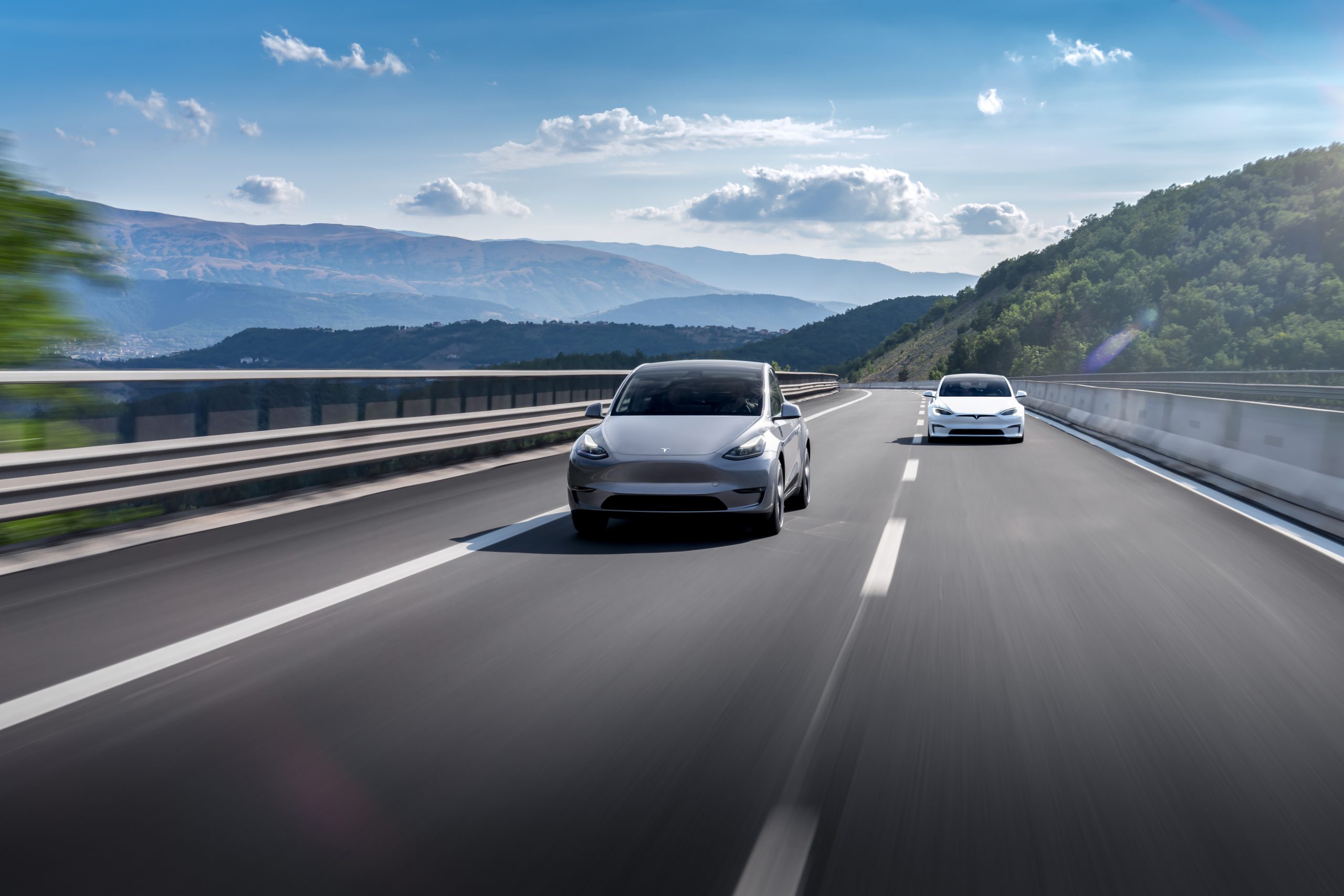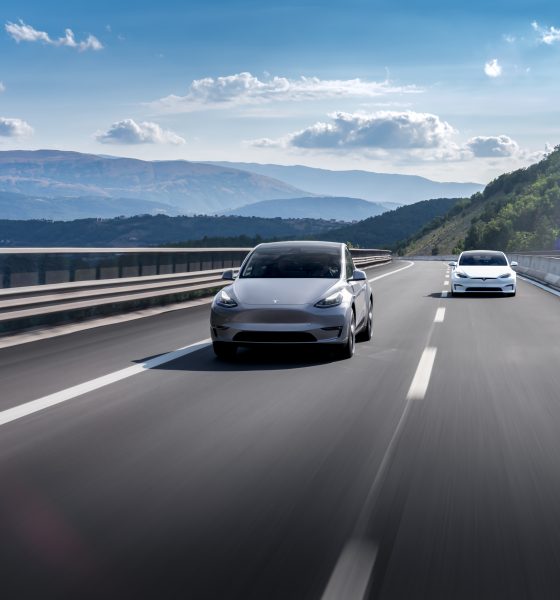A new study from the University of California (UC) Berkeley shows a steady, albeit modest, decline in carbon emissions with increased electric vehicle (EV) adoption over the last few years.
The research looks at carbon emission trends between 2018 and 2022, utilizing data from 50 air-quality sensors throughout the Bay Area, as detailed in a report published in the Environmental Science and Technology journal on Thursday.
The data shows a gradual decline in carbon dioxide emissions, representing a 1.8-percent yearly decrease on average, according to the study’s Lead Researcher and Professor, Executive Associate Dean at Berkeley’s College of Computing, Data Science and Society, Ronald Cohen in a report from the San Francisco Chronicle.
“If we do it for 20 years, it’s a big number,” Cohen said.
Researchers reported the highest levels of carbon dioxide near highway corridors, and while 1.8 percent may not seem like much, Cohen adds that a 3.5 percent annual reduction would be enough to reach California’s 2045 carbon neutrality target.
Along with using the sensors to gather data, the study examined registration data from the California Department of Motor Vehicles (DMV) to monitor the ratio of EVs on the road to gas cars.
The researchers found the data to remain true even when considering other potential factors, including the reduction of motor vehicle traffic during the early days of the COVID-19 pandemic and other seasonal influences. Still, the researchers concluded that the decrease in emissions is due to the increase in hybrid and battery-electric vehicle (BEV) use, as fuel-efficiency standards tighten.
Cohen also notes that the majority of carbon dioxide emissions come from the transportation sector, as well as wintertime heating and heavy industry such as oil refineries. Part of the goal of the study was to determine if data shows that clean transportation policies actually make a difference, “so people could put energy into climate policies that really work.”
While the sensors also monitored other pollutants, including particulates and nitrogen oxide, Cohen says this particular study was focused on measuring carbon dioxide emissions. This study, he adds, was the first to look at a larger area and make a connection between a decline in carbon emissions and EV adoption.
According to Cohen, the findings also represent a more powerful connection between the adoption of EVs and reduced emissions than he initially thought it would.
“That’s the big win,” Cohen added.
BEV sales in the U.S. reached 1.1 million units in 2023, according to Cox Automotive data, with California, Washington, New Jersey, Connecticut and Texas making up the top five adopters. Globally, the International Energy Agency (IEA) expects EV adoption to increase tenfold by 2030, under current goals set by governments around the world.
What are your thoughts? Let me know at zach@teslarati.com, find me on X at @zacharyvisconti, or send us tips at tips@teslarati.com.

Elon Musk
Starlink achieves major milestones in 2025 progress report
Starlink wrapped up 2025 with impressive growth, adding more than 4.6 million new active customers and expanding service to 35 additional countries, territories, and markets.

Starlink wrapped up 2025 with impressive growth, adding more than 4.6 million new active customers and expanding service to 35 additional countries, territories, and markets. The company also completed deployment of its first-generation Direct to Cell constellation, launching over 650 satellites in just 18 months to enable cellular connectivity.
SpaceX highlighted Starlink’s impressive 2025 progress in an extensive report.
Key achievements from Starlink’s 2025 Progress
Starlink connected over 4.6 million new customers with high-speed internet while bringing service to 35 more regions worldwide in 2025. Starlink is now connecting 9.2 million people worldwide. The service achieved this just weeks after hitting its 8 million customer milestone.
Starlink is now available in 155 markets, including areas that are unreachable by traditional ISPs. As per SpaceX, Starlink has also provided over 21 million airline passengers and 20 million cruise passengers with reliable high-speed internet connectivity during their travels.
Starlink Direct to Cell
Starlink’s Direct to Cell constellation, more than 650 satellites strong, has already connected over 12 million people at least once, marking a breakthrough in global mobile coverage.
Starlink Direct to Cell is currently rolled out to 22 countries and 6 continents, with over 6 million monthly customers. Starlink Direct to Cell also has 27 MNO partners to date.
“This year, SpaceX completed deployment of the first generation of the Starlink Direct to Cell constellation, with more than 650 satellites launched to low-Earth orbit in just 18 months. Starlink Direct to Cell has connected more than 12 million people, and counting, at least once, providing life-saving connectivity when people need it most,” SpaceX wrote.
News
Tesla Giga Nevada celebrates production of 6 millionth drive unit
To celebrate the milestone, the Giga Nevada team gathered for a celebratory group photo.

Tesla’s Giga Nevada has reached an impressive milestone, producing its 6 millionth drive unit as 2925 came to a close.
To celebrate the milestone, the Giga Nevada team gathered for a celebratory group photo.
6 million drive units
The achievement was shared by the official Tesla Manufacturing account on social media platform X. “Congratulations to the Giga Nevada team for producing their 6 millionth Drive Unit!” Tesla wrote.
The photo showed numerous factory workers assembled on the production floor, proudly holding golden balloons that spelled out “6000000″ in front of drive unit assembly stations. Elon Musk gave credit to the Giga Nevada team, writing, “Congrats on 6M drive units!” in a post on X.
Giga Nevada’s essential role
Giga Nevada produces drive units, battery packs, and energy products. The facility has been a cornerstone of Tesla’s scaling since opening, and it was the crucial facility that ultimately enabled Tesla to ramp the Model 3 and Model Y. Even today, it serves as Tesla’s core hub for battery and drivetrain components for vehicles that are produced in the United States.
Giga Nevada is expected to support Tesla’s ambitious 2026 targets, including the launch of vehicles like the Tesla Semi and the Cybercab. Tesla will have a very busy 2026, and based on Giga Nevada’s activities so far, it appears that the facility will be equally busy as well.
News
Tesla Supercharger network delivers record 6.7 TWh in 2025
The network now exceeds 75,000 stalls globally, and it supports even non-Tesla vehicles across several key markets.

Tesla’s Supercharger Network had its biggest year ever in 2025, delivering a record 6.7 TWh of electricity to vehicles worldwide.
To celebrate its busy year, the official @TeslaCharging account shared an infographic showing the Supercharger Network’s growth from near-zero in 2012 to this year’s impressive milestone.
Record 6.7 TWh delivered in 2025
The bar chart shows steady Supercharger energy delivery increases since 2012. Based on the graphic, the Supercharger Network started small in the mid-2010s and accelerated sharply after 2019, when the Model 3 was going mainstream.
Each year from 2020 onward showed significantly more energy delivery, with 2025’s four quarters combining for the highest total yet at 6.7 TWh.
This energy powered millions of charging sessions across Tesla’s growing fleet of vehicles worldwide. The network now exceeds 75,000 stalls globally, and it supports even non-Tesla vehicles across several key markets. This makes the Supercharger Network loved not just by Tesla owners but EV drivers as a whole.
Resilience after Supercharger team changes
2025’s record energy delivery comes despite earlier 2024 layoffs on the Supercharger team, which sparked concerns about the system’s expansion pace. Max de Zegher, Tesla Director of Charging North America, also highlighted that “Outside China, Superchargers delivered more energy than all other fast chargers combined.”
Longtime Tesla owner and FSD tester Whole Mars Catalog noted the achievement as proof of continued momentum post-layoffs. At the time of the Supercharger team’s layoffs in 2024, numerous critics were claiming that Elon Musk was halting the network’s expansion altogether, and that the team only remained because the adults in the room convinced the juvenile CEO to relent.
Such a scenario, at least based on the graphic posted by the Tesla Charging team on X, seems highly implausible.










